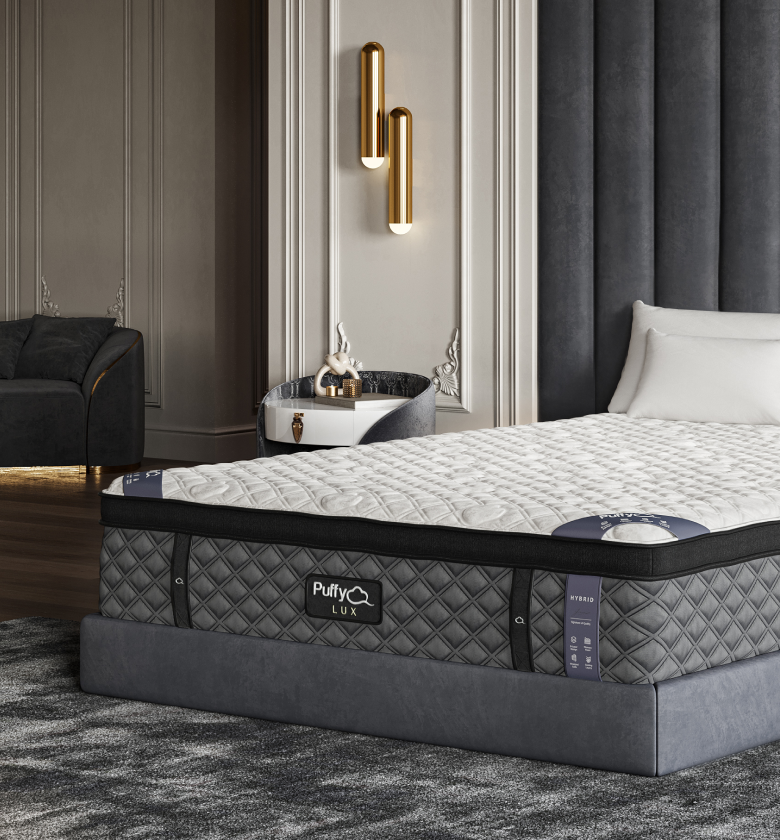You spend one-third of your life sleeping. Why settle for a mass-produced mattress when you can create one tailored to your own needs?
If you’ve ever toyed with the idea of constructing your own bed, this guide is here to help you out. We’ll dissect the steps involved in how to build a spring mattress so that you can create your own sanctuary of sleep.
The Basic Elements You'll Need
Building a mattress isn't just about springs; it's a blend of elements that provide comfort, support, and longevity. Here's what you'll need:
Materials
- Coils or springs
- Polyfoam or latex foam
- Mattress cover fabric
- Flame retardant layer (optional but recommended)
Tools
- Sewing machine
- Scissors
- Tape measure
- Adhesive for foam layering
Build Your Own Box Spring Mattress
Ah yes, the foundational element - the box spring. Unlike traditional spring mattresses, the box spring is not just about springs; it's a combination of wood and metal to give that foundational support.
The Frame
Start with constructing a wooden frame. Plywood is often the material of choice for its durability and cost-effectiveness.
Adding the Springs
Here comes the coiled element. Attach coil springs to the wooden frame using screws or special coil spring fasteners.
Covering It Up
Finally, drape your box spring frame with a fabric of your choice and secure it in place. And voila, you've built your own box spring mattress!
Selecting the Right Springs
There's more to springs than just, well, springiness. The right springs determine the comfort and lifespan of your mattress.
Types of Springs
- Bonnell Springs: Traditional and budget-friendly.
- Pocketed Springs: Better motion isolation.
- Offset Springs: Ideal for heavier mattresses.
Spring Count Matters
Higher spring count usually equates to more comfort and durability, but it can also make the mattress quite heavy.
Opting for Cover Material
Choosing the right fabric can make or break your mattress experience. Cotton is breathable but not very water-resistant. Poly-blends offer a balance between breathability and water resistance.
Fabric Choices
- Cotton
- Polyester
- Poly-cotton blend
- Organic materials for eco-conscious folks
Layering and Assembly
The right layering can make your DIY spring mattress feel like a plush hotel bed.
Steps
- Lay down a base layer of foam.
- Position your spring system on top of the base layer.
- Add a comfort layer of foam, latex, or both.
- Attach the layers using adhesive or a sewing machine.
Check out Puffy mattress reviews from real customers and see how we compare with other brands.
Attaching the Spring System
Once your layers are in place, you can install the spring system. This involves attaching each spring to the foam layers securely to ensure there's no wiggling or shifting.
Securing Methods
- Sewing
- Mechanical fasteners
- Adhesives
Common Pitfalls and How to Avoid Them
Like any DIY project, you can encounter challenges.
- Spring Poking: Ensure the springs are properly cushioned.
- Uneven Surface: Make sure the springs are evenly distributed.
How to Maintain Your DIY Spring Mattress
Your homemade spring mattress deserves some love and care.
- Rotate the mattress every 3-6 months.
- Vacuum the surface occasionally.
Conclusion: Ready to Catch Some DIY Zs?
So, are you ready to take the plunge into the world of mattress crafting? The benefits are many: customization, cost-saving, and the pure joy of creating something with your own hands.
Use our store locator to find the closest furniture or mattress store near you and feel the cloudlike comfort of our Puffy Mattress in person.
With this guide, you are well on your way to knowing how to build a spring mattress that can stand the test of both time and comfort.

- Award-winning comfort.
- Lifetime warranty.
- 101-night sleep trial.
- Free shipping and returns.
- 100% made in USA.












